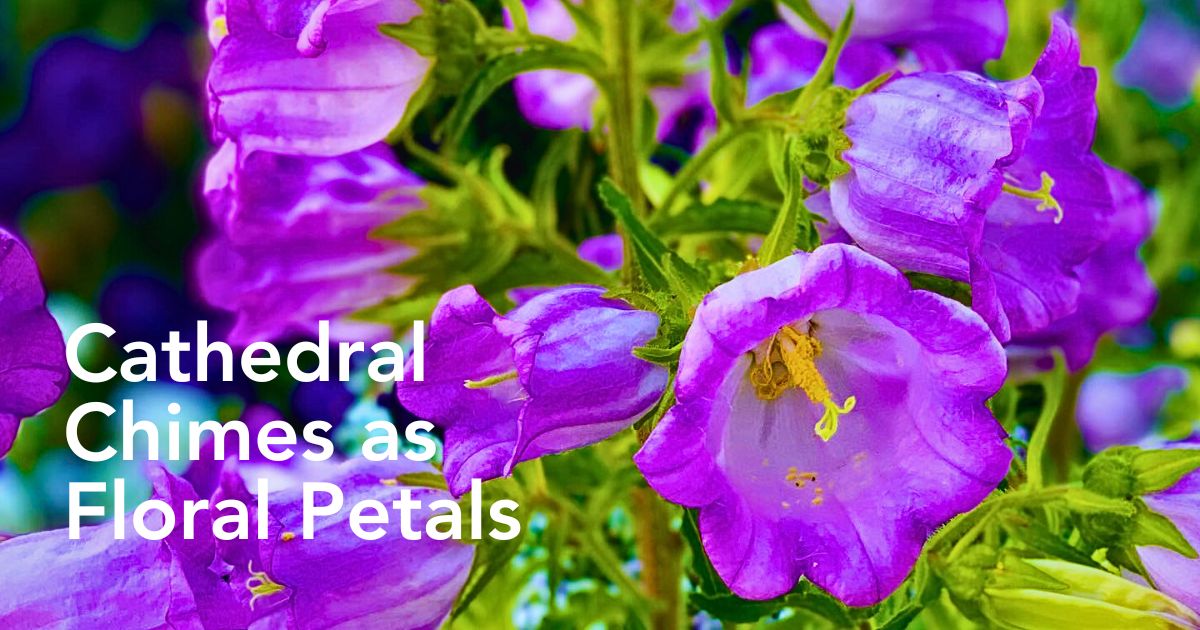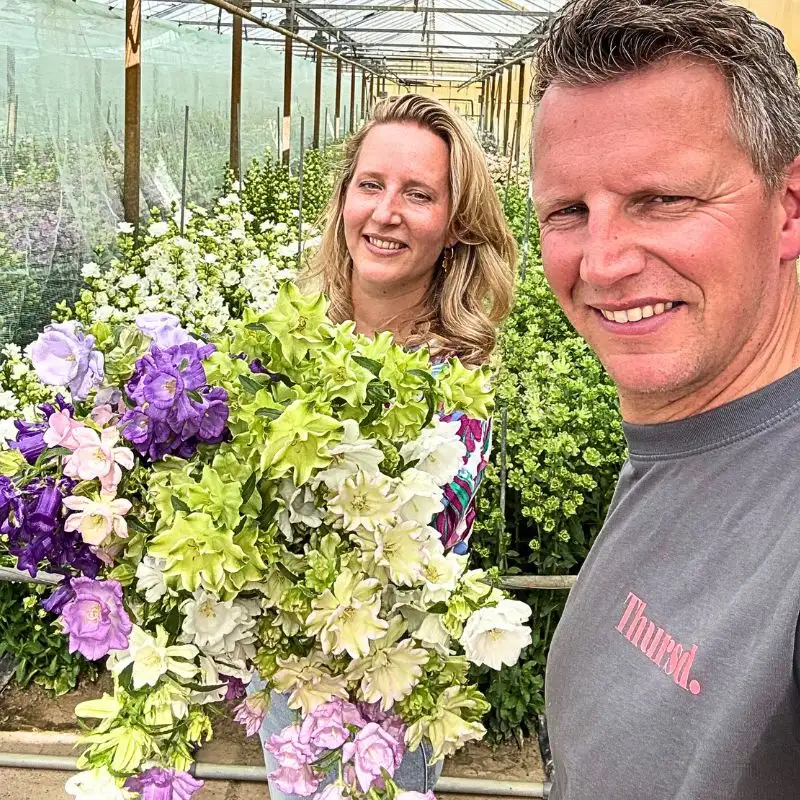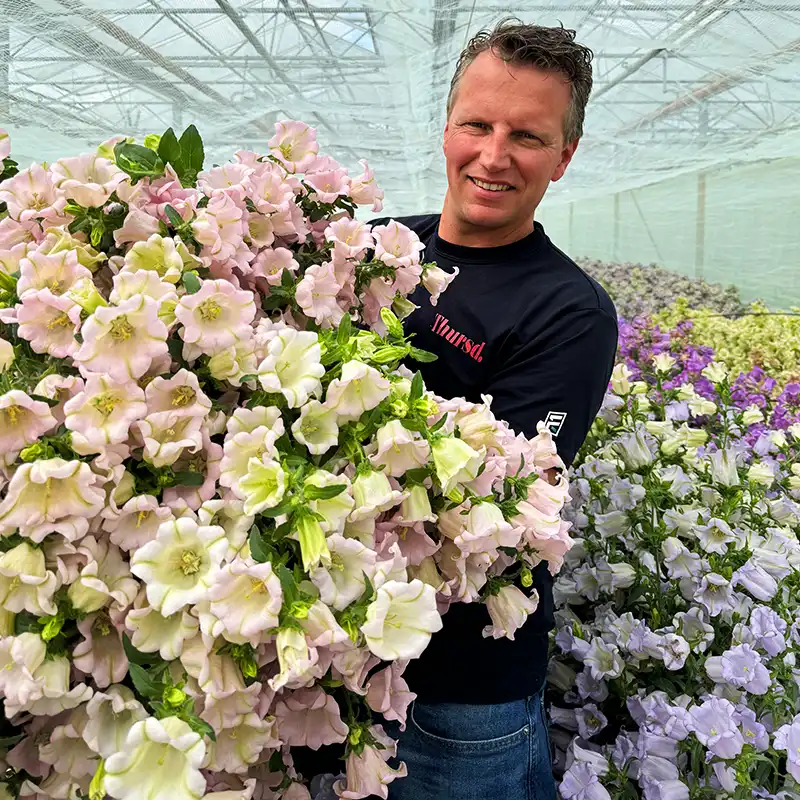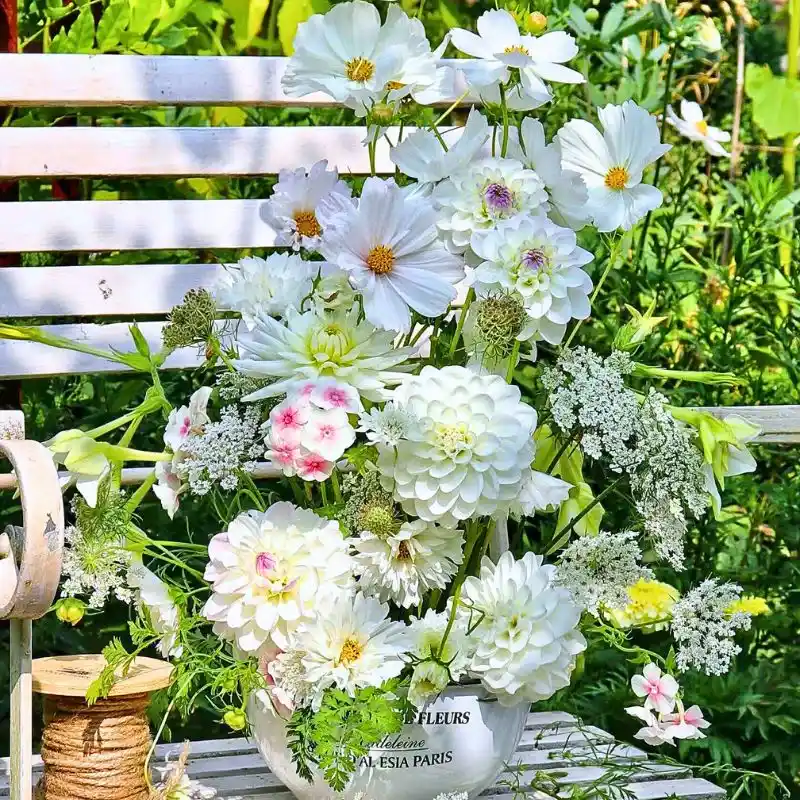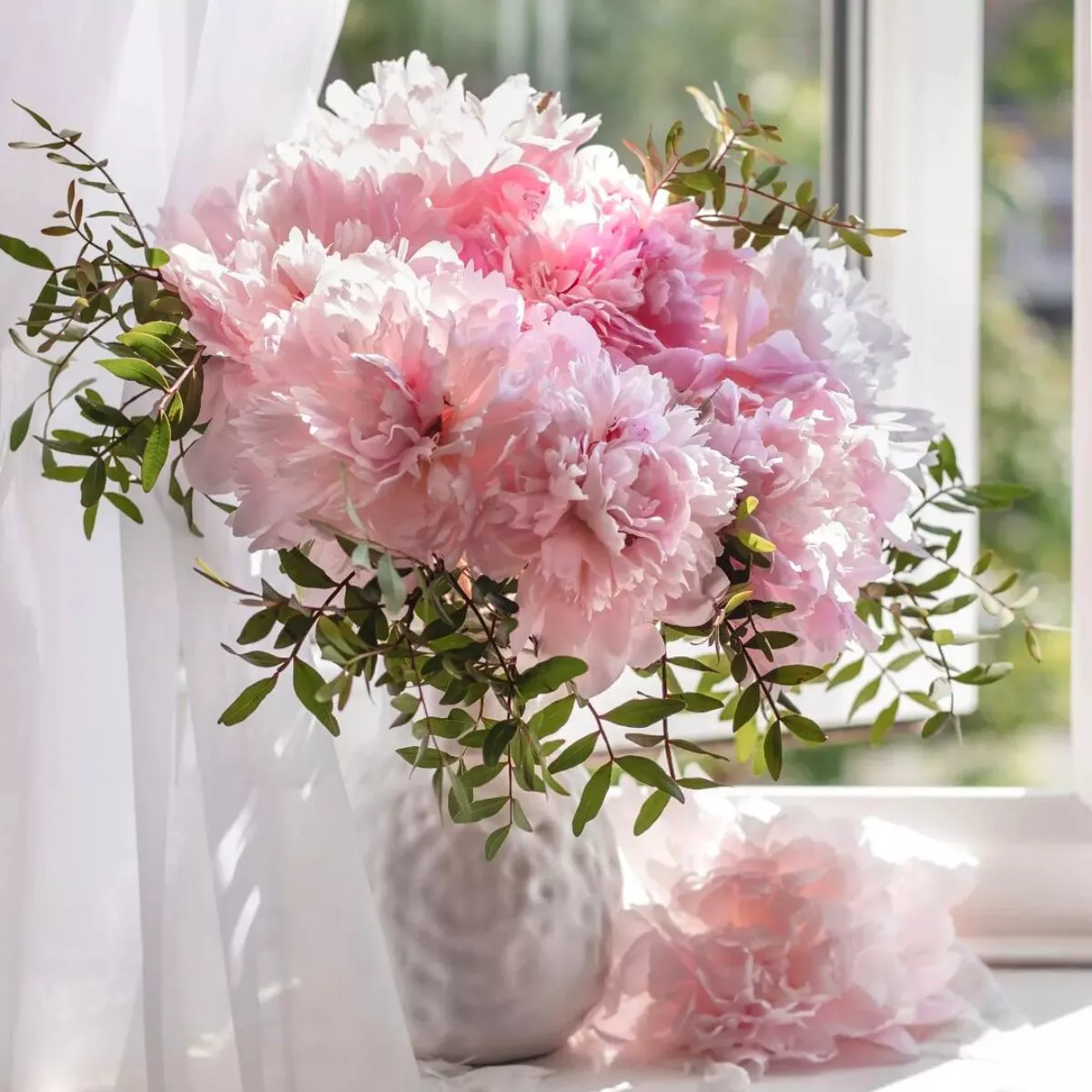There are not so many flowering plants that summon attention quite like Canterbury bells. Their distinctive bell-shaped blossoms cascading in graceful spires are generally an enchanting sight to behold, swaying gently in summer breezes like cathedral chimes. The name Canterbury bells emerged from these; the simple observation that nature had deliberately created the perfect replicas of bronze bells in the form of petals on stems, as opposed to being a result of a royal decree or botanical expedition.
From their age-old ecclesiastical associations to modern gardening and design applications, these beguiling biennials, scientifically known as Campanula medium, have often transformed ordinary cottage gardens into romantic havens and flower designs into masterpieces. Through them, appreciation and constancy find their perfect floral expression. Keen to know more about them?
Understanding Canterbury Bells and Their Campanula Heritage
The Canterbury bell belongs to the extensive Campanulaceae family, a botanical family with more than 300 species of bellflowers distributed across temperate regions. It shares the distinctive campanulate form from which its Latin nomenclature derives. The genus name Campanula comes from the Latin ‘campana’, meaning 'bell', a fitting tribute to these flowers whose tubular blossoms mirror the sacred bells that once echoed through medieval landscapes.
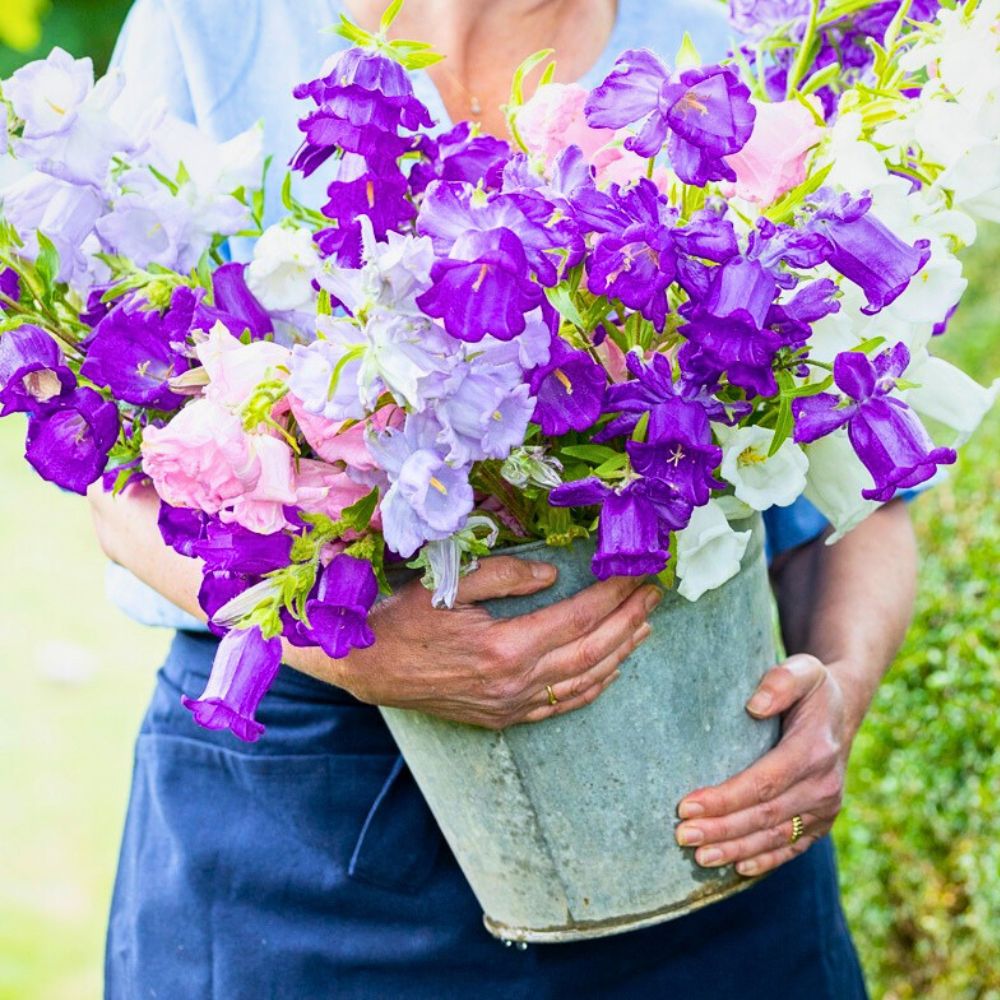
This particular species is one of the most recognizable members of the Campanula genus, distinguished by its robust stature and exceptionally large, cup-shaped blossoms. Unlike many of its diminutive cousins that hug rocky crevices or woodland floors, Campanula medium commands vertical space, reaching impressive heights that can tower above neighboring perennials. The relationship between Canterbury bells and other Campanulas is more than just taxonomic classification.
These plants share basic characteristics, including their distinctive corolla structure, which naturally forms the bell shape that gives the entire family its common name. However, Canterbury bells flowers distinguish themselves through their substantial size and the remarkable depth of their corollas, creating an almost architectural presence in compositions. Notably, while all Canterbury bells are Campanulas, not all Campanulas are Canterbury bells, because the genus Campanula contains many other species of bellflowers as well.

Also, Canterbury bell flowers come in an exquisite palette of colors. The traditional blue varieties, ranging from delicate lavender to deep purple, create stunning displays alongside pristine white Canterbury bells that gleam like pearls against emerald foliage. Rose-pink varieties add warmth to the range, while the distinctive cup-and-saucer forms—known scientifically as Campanula medium Calycanthema—present double-layered petals that offer an almost architectural beauty.
Canterbury Bell Flower Symbolism and Historical Roots, and Significance
Native to the mountainous regions of southern Europe, particularly the Pyrenees and Mediterranean slopes, these flowers were first introduced to British gardens around 1597. During the sixteenth and seventeenth centuries, Canterbury bells were actually called Coventry Bells, but by the nineteenth century, they had assumed their current name, ever linking them to the ancient city of Canterbury.

The origin of the name Canterbury bells traces back to medieval England. Its origin echoes the flower's resemblance to the church bells of Canterbury Cathedral, those bronze voices that summoned pilgrims and faithful to prayer and reflection. Journeying to Canterbury Cathedral, pilgrims would hear the resonant chimes of the church bells resounding across the countryside.
The resemblance between these sacred sounds and the gentle tinkling of the plant's papery seed pods in autumn breezes created an immediate connection in the minds of early botanists and gardeners. This association with pilgrimage and spiritual devotion infused the flowers with symbolic meanings that persisted through generations.
During the Victorian era, when the language of flowers reached its most refined expression, Canterbury bells carried messages of gratitude and dedicated faith. Their presence in monastery gardens throughout Europe reinforced these spiritual connections, while their cultivation in cottage gardens democratized their beauty, making them accessible to common folk who might never undertake pilgrimages to distant cathedrals.
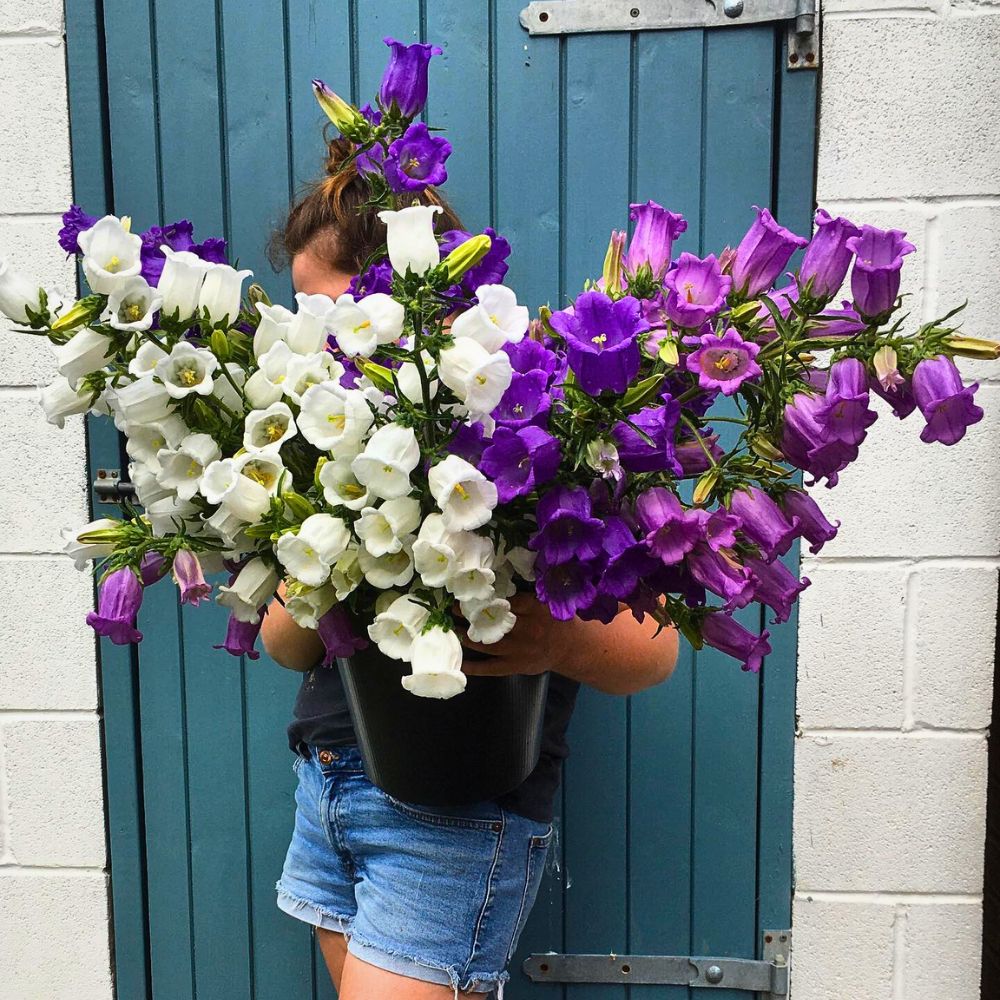
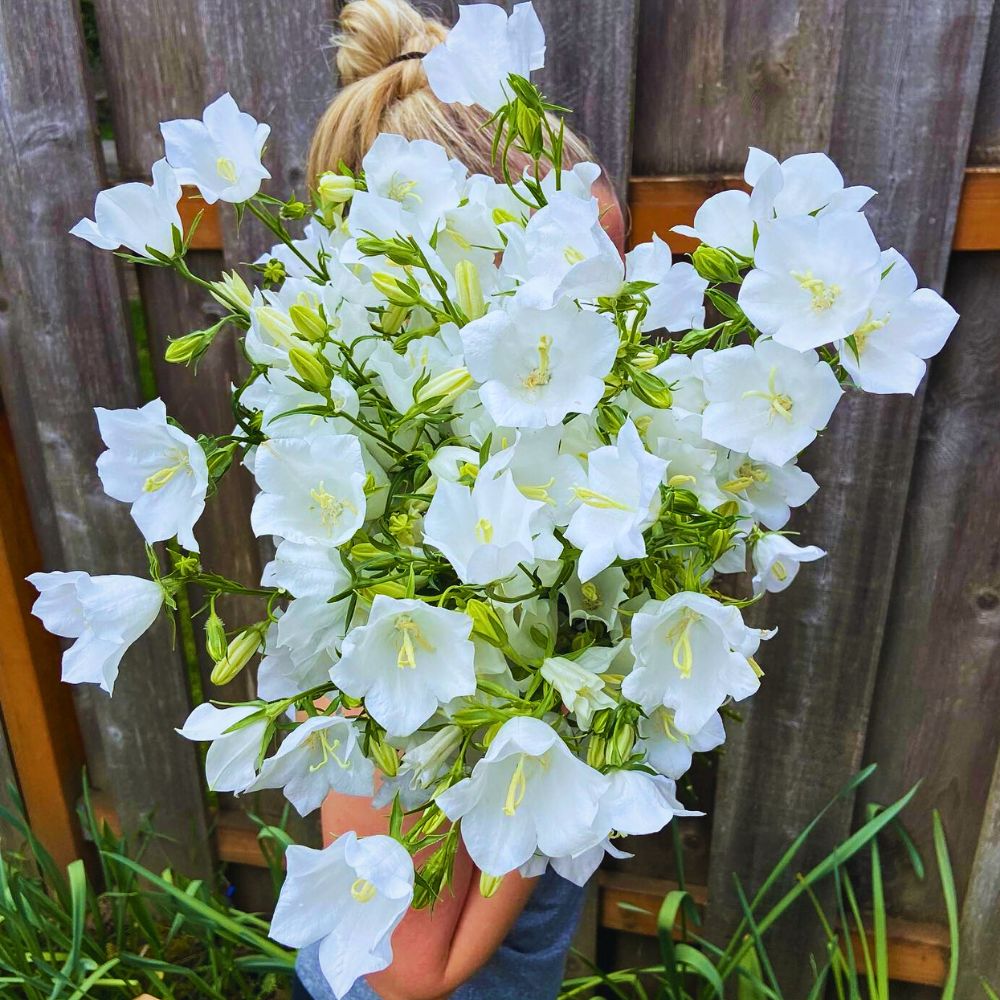
Still in floriography, Canterbury bells represented loyalty and everlasting love, which made them particularly important for expressing appreciation and faithful devotion. They appeared frequently in wedding bouquets and anniversary arrangements where their bell-like form seemed to chime with joy and celebration. Some interpretations also associate them with humility and the return of a cherished friend.
Outside these contexts, the plant's symbolic significance extended to folk traditions. It was believed to ward off negative energies and protect households from harm. The bell-like form was thought to summon benevolent spirits while repelling malevolent forces, thus it was a popular addition to gardens surrounding rural homes.

Throughout their long history, Canterbury bells have maintained their reputation as cottage garden aristocrats, bringing old-world charm to contemporary landscapes. Their flower forms provide structural interest in mixed borders, while their height makes them excellent middle-ground subjects that bridge the gap between foreground edging plants and background specimens. Here, the graceful swaying motion of their flower-laden stems adds movement and life to static garden compositions, creating dynamic displays that change with their interaction with light and breeze.
Understanding the Growth Cycles - Are Canterbury Bells Perennials?
To fully comprehend whether Canterbury bells are fully perennial, it requires examining their unique growth pattern. These flowering plants operate as biennials, occupying the middle ground between annual and perennial behaviors. During their first year, these plants focus entirely on establishing robust root systems and developing substantial rosettes of foliage. While this foundational year often disappoints impatient growers who expect immediate gratification, the patient approach enables the spectacular display that follows.

The second year transforms these humble leaf clusters into towering spires adorned with dozens of Canterbury bells flowers. This dramatic metamorphosis occurs through spring and early summer, creating displays that justify the previous year's restraint. Following their magnificent flowering period, the plants complete their lifecycle by producing seeds before naturally declining, though they often self-seed generously, ensuring continuity in garden spaces.
Some Canterbury bells varieties have been developed through selective breeding, which offers commercial growers and gardeners options for better selections and specimens. These cultivars sacrifice some of the dramatic impact of true biennials but provide reliable returns every other year; thus, they are valuable for formal garden designs requiring predictable elements and useful for all-year-round floral design.
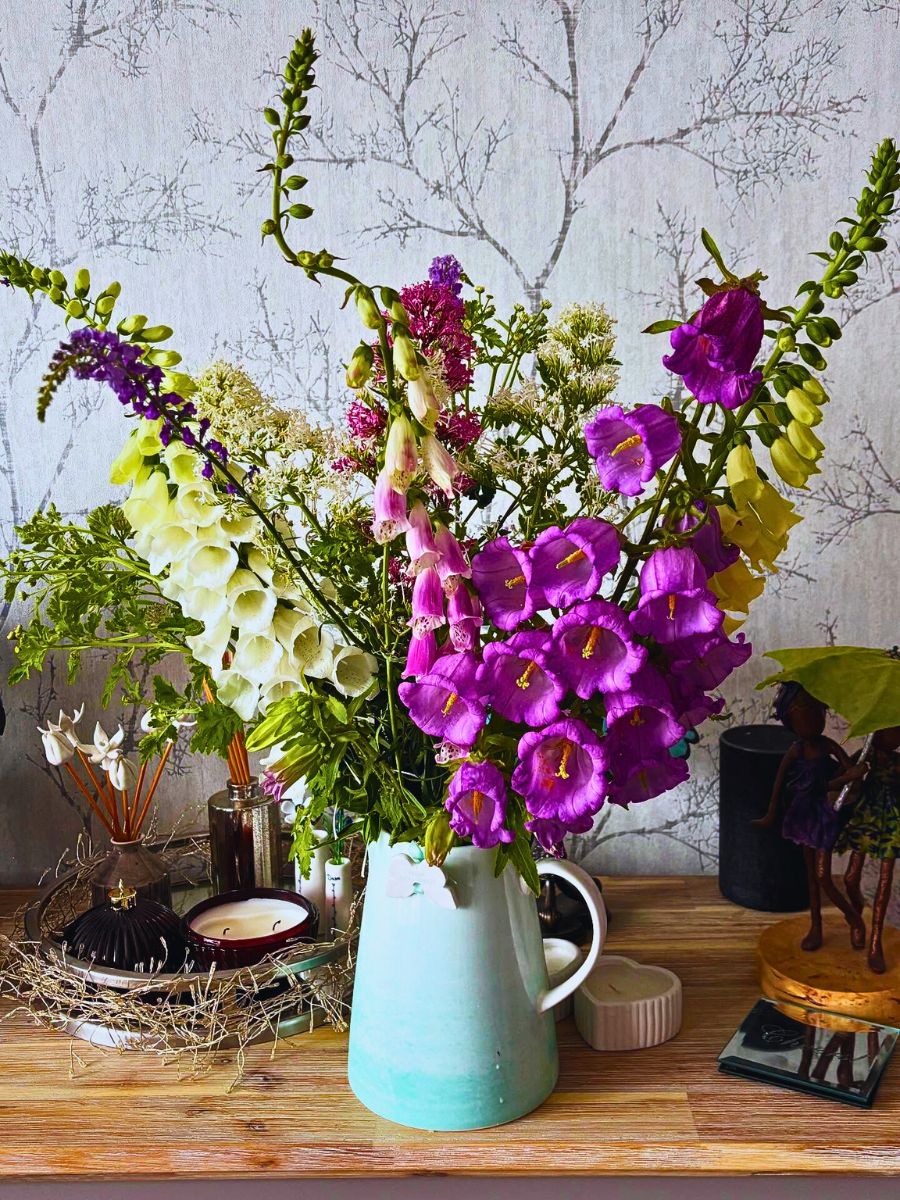
So, the question of whether Canterbury bells function as perennials or not depends partly on growing conditions and variety selection. While traditional forms complete their lifecycle in two years, favorable conditions sometimes encourage root survival and continued growth for additional seasons. However, gardeners achieve the most reliable results by treating them as true biennials, planning accordingly for their unique growth pattern and seasonal requirements.
How to Grow and Care for Canterbury Bells
How to grow Canterbury bells successfully, start with understanding their soil preferences and environmental needs. These plants thrive in well-draining soil enriched with organic matter, preferring conditions that remain consistently moist without becoming waterlogged. Their native European habitats provide clues to their preferences: partial shade protection during the hottest parts of summer days, combined with morning sunlight that encourages sturdy growth. They prefer slightly acidic to neutral conditions with pH levels between 6.0 and 7.0.
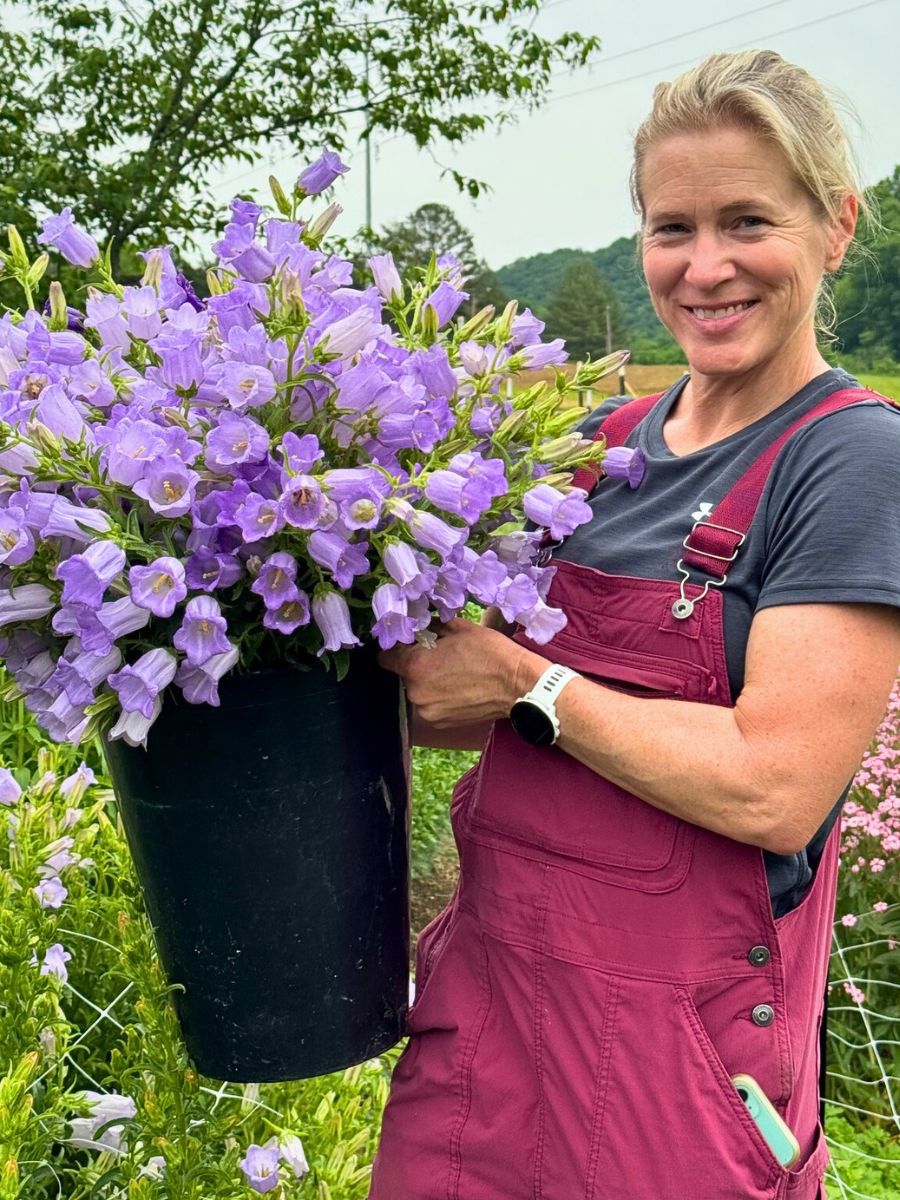
Canterbury bells care involves relatively forthright maintenance once their basic requirements are met. Regular watering during dry periods supports their substantial foliage and developing flower spikes, while mulching around plants conserves moisture and suppresses competing weeds. The key to successful cultivation lies in providing adequate space for their mature size, as overcrowded plants become susceptible to fungal diseases and fail to achieve their full potential.
Starting from Canterbury bells seeds often offers the most economical approach to establishing these plants in garden settings. Seeds require a period of cold stratification to break dormancy, mimicking the natural winter conditions they would experience in outdoor environments. This process can be achieved through refrigeration or by sowing them directly in autumn, allowing natural seasonal cycles to trigger germination in spring.

Canterbury bells care begins with proper site selection, as these flowers perform best in locations receiving full sun to partial shade, though afternoon protection becomes essential in warmer climates where intense heat can stress the petals. For the soil, poor drainage can lead to root rot and plant failure.
Canterbury Bells Care Throughout the Growing Season
Effective Canterbury bells care goes beyond their initial establishment. It incorporates continued maintenance throughout their growth cycle. During the first year, young plants do well with light mulching to retain moisture and suppress weeds, while winter protection with evergreen boughs or straw helps ensure survival in colder regions. The second year brings increased water and nutrient needs as stems elongate and flower buds form. Regular feeding with balanced fertilizer supports vigorous growth and abundant flowering.

The cultivation of white Canterbury bells requires particular attention to soil preparation and seasonal timing. These pristine varieties often prove slightly more sensitive to environmental stress than their colored cousins, benefiting from consistent moisture and protection from extreme heat. Their ethereal beauty makes them especially prized for moon gardens and white-themed plantings, where their ghostly bells seem to glow in twilight hours. Some gardeners even report that white Canterbury bells possess a subtle sweet pea fragrance.
White Canterbury Bells and Other Color Variations
While traditional Canterbury bells flowers appear in classic blue and purple tones, modern breeding programs have expanded the color palette considerably. Remember the white Canterbury bells that offer elegance, especially for moon gardens and formal designs? Yes, those whose pale petals seem to glow in the evening light. Pink varieties provide softer alternatives for romantic garden themes, while deep purple selections add dramatic intensity to mixed borders.
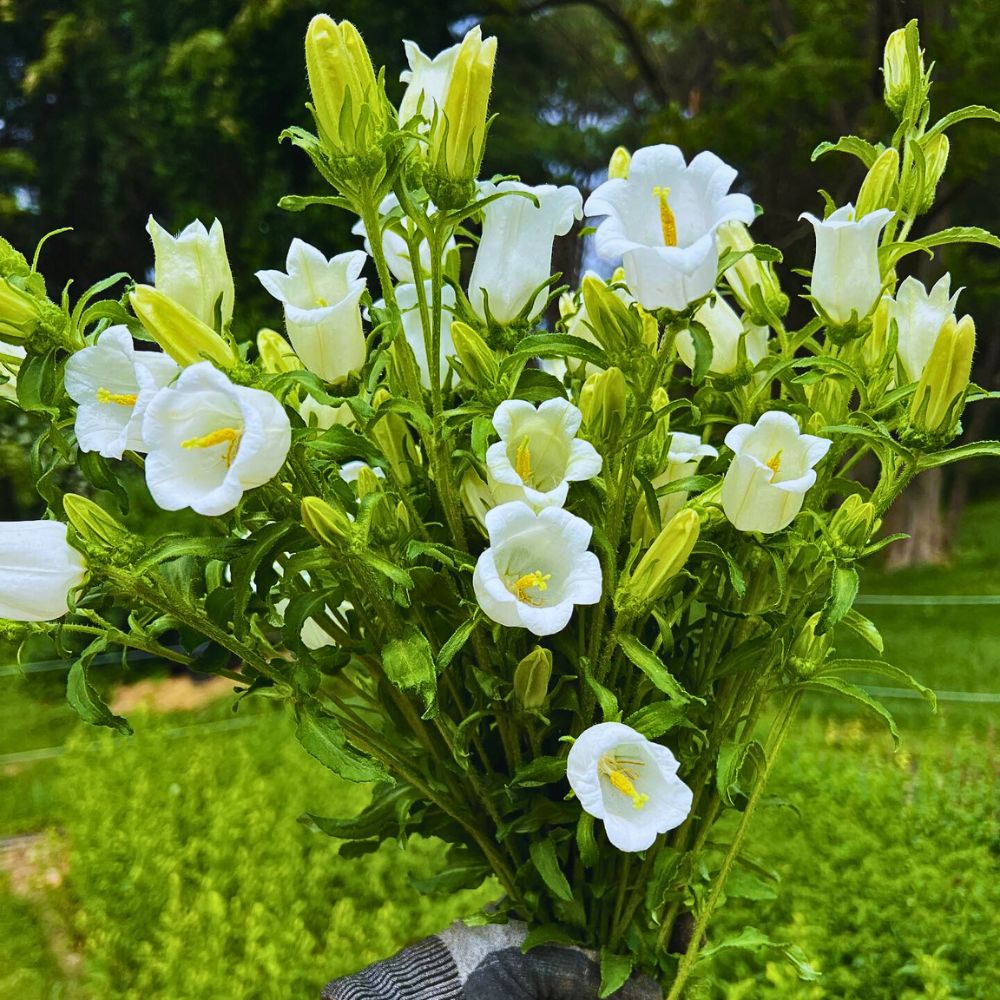
You remember the architectural quality of Canterbury bells? This also makes them exceptional choices for vertical accents in garden compositions. Their substantial height and sturdy stems provide structure that supports more delicate neighboring plants, while their bold presence prevents them from disappearing into busy mixed plantings. Cottage garden designs particularly benefit from their informal elegance, where they easily naturalize alongside roses, Delphiniums, and other traditional companions.
Canterbury Bells Flowers in Design Applications
The versatility of Canterbury bells flowers goes beyond traditional cottage gardens, offering contemporary designers numerous opportunities for creative expression. In formal parterre gardens, these stately plants provide essential vertical elements that break up horizontal expanses of low hedging and groundcover plantings. Their predictable flowering schedule makes them valuable for seasonal color schemes, while their substantial presence anchors mixed borders that might otherwise lack focal points.
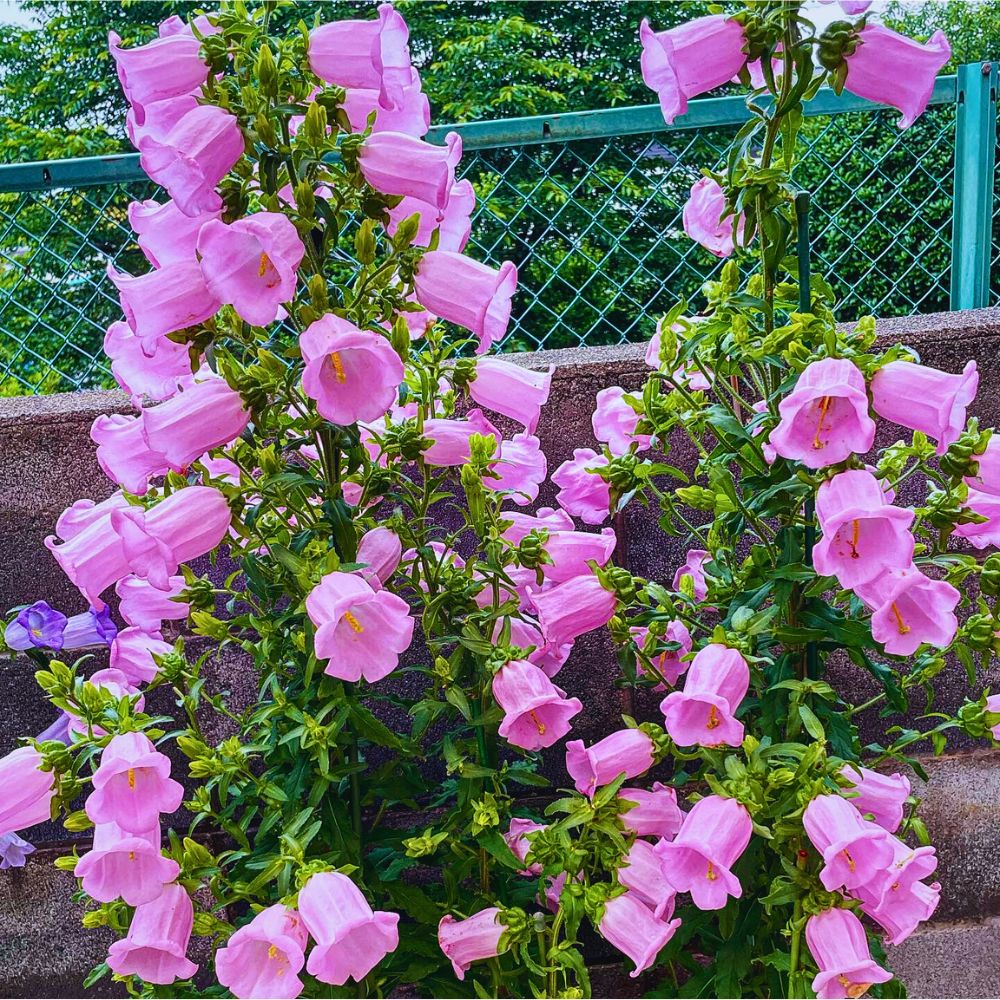
In contemporary landscape design, Canterbury bells are excellent transition plants between formal and informal garden areas. Their refined appearance suits structured settings, while their tendency toward self-seeding adds the spontaneity that prevents overly controlled landscapes from appearing sterile. Urban garden designers increasingly appreciate them for their ability to create privacy screens and natural boundaries without requiring permanent structural elements.
When planted in drifts along property lines or around seating areas, mature plants create temporary barriers of foliage and flowers that soften sharp architectural edges while allowing visual permeability. Similarly, native bees, butterflies, and beneficial insects depend on the nectar and pollen these plants offer during summer. Their long flowering period provides reliable food sources throughout the growing season, making them essential elements of wildlife gardens and pollinator corridors in both rural and urban areas.
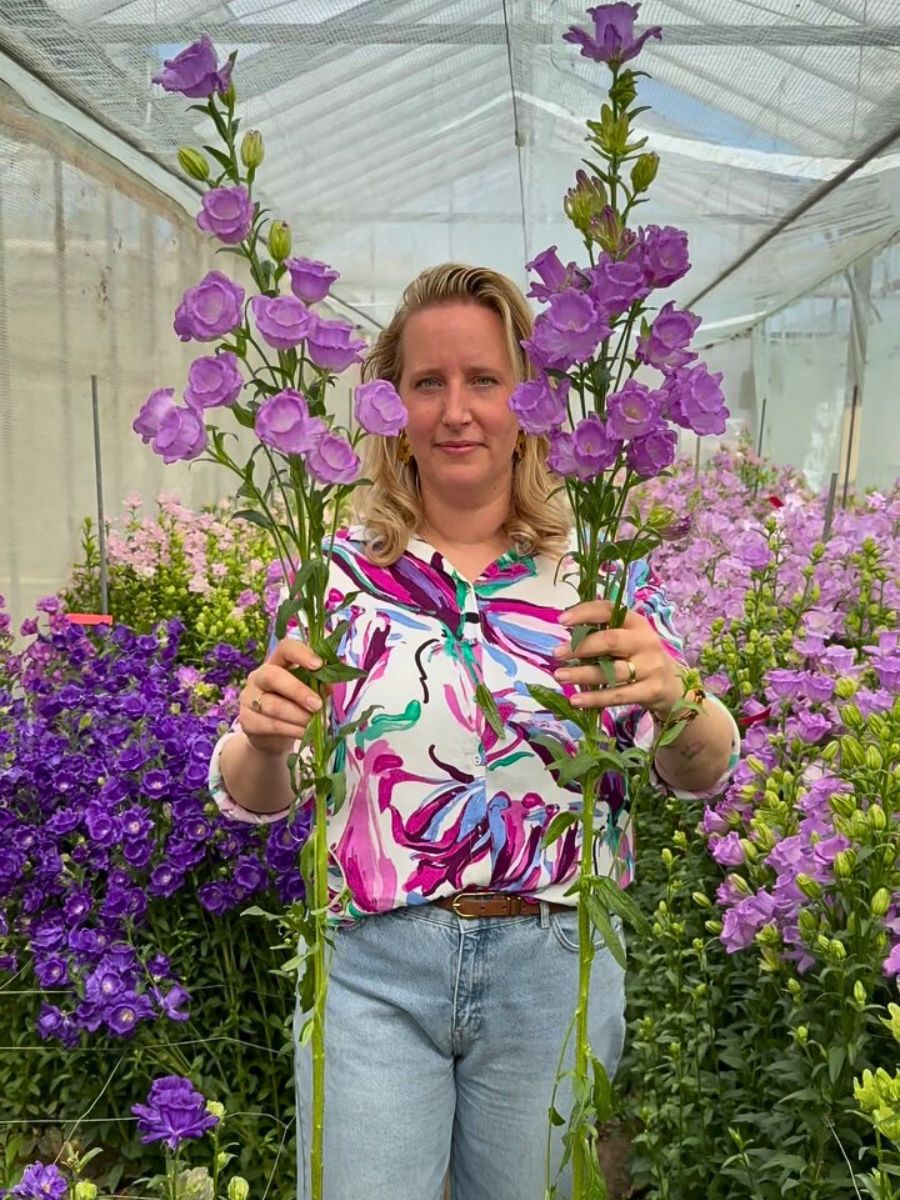
The Cut Flower and Floral Design Potential of Canterbury Bells
The cut flower benefits of Canterbury bells deserve special recognition among growers with farms and gardens intended for harvest. Their long stems and excellent vase life make them ideal for fresh flower arrangements, while their distinctive shape provides unique focal points that distinguish homegrown bouquets from commercial alternatives. Professional florists increasingly appreciate these flowers’ stems, particularly for their architectural qualities in both casual and formal arrangements, where they work as excellent line flowers, establishing structure and movement within compositions.
In bridal work, Canterbury bells flowers offer romantic alternatives to more common selections, their bell-shaped forms suggesting wishes and blessings while their range of colors accommodates diverse wedding palettes. White Canterbury bells particularly shine in sophisticated monochromatic designs, while purple and blue varieties add depth and meaning to country-style arrangements. Their sturdy stems require minimal conditioning, so they are reliable choices for events where longevity matters most.
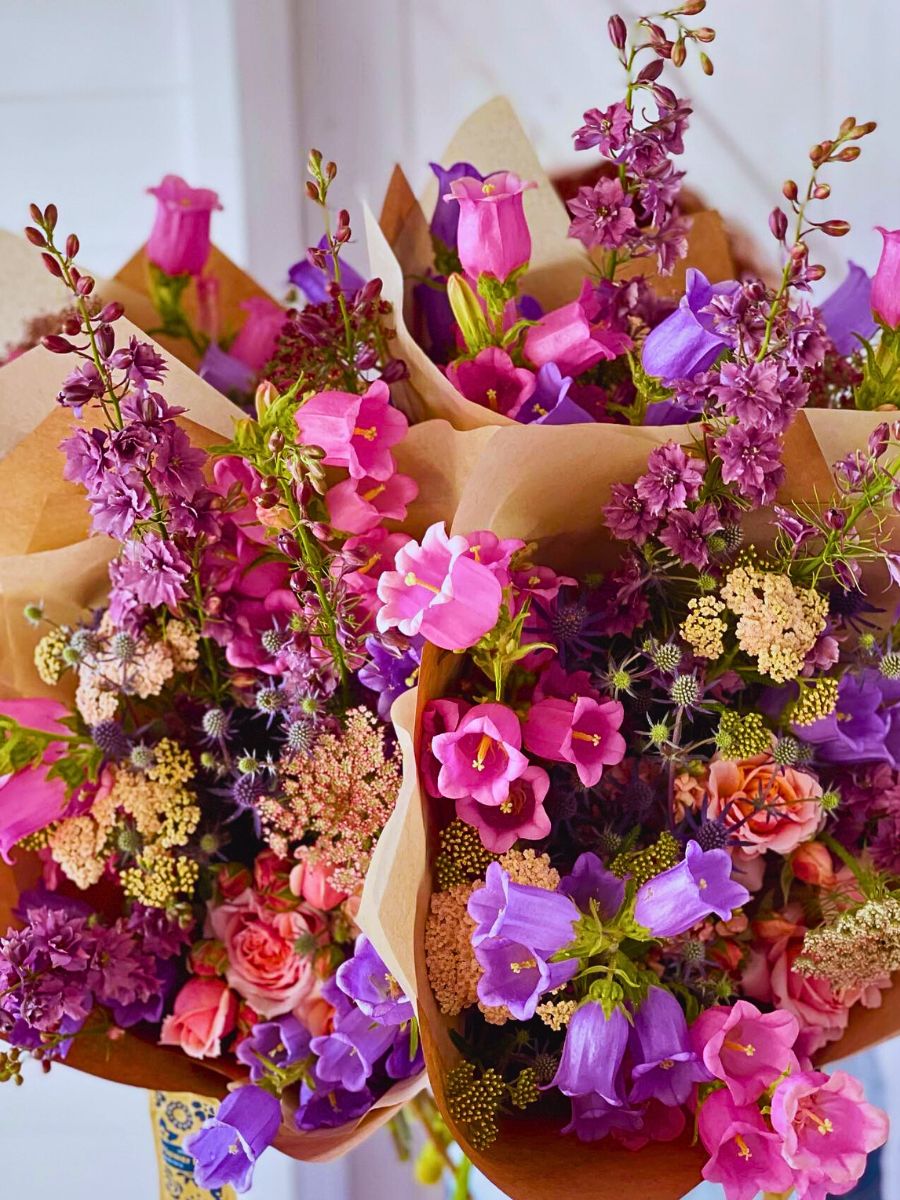
The resourcefulness of Canterbury bells in floral design incorporates seasonal decorating, too. Their natural progression from fresh flowers to attractive seed pods provides drawn-out value. Summer arrangements featuring fresh Canterbury bells flowers can transition seamlessly into autumn displays as the pods develop, offering continuity that few other cut flowers provide. Dried Canterbury bells also maintain their bell shape while developing papery textures that add rustling sounds to arrangements.
Safety Consideration - Are Canterbury Bells Poisonous?
Are Canterbury bells poisonous to cats or dogs? Well, fortunately, they are not considered toxic to humans or animals. The question of whether Canterbury bells are poisonous to cats can, therefore, be answered with reassurance, as these flowers appear on numerous lists of non-toxic plants for feline companions. Research also confirms that these beauties pose no threat to canine health.

For the felines, however, with their tendency to nibble on interesting plants, they may experience mild gastrointestinal irritation from consuming Canterbury bells foliage or flowers. While not typically life-threatening, such incidents deserve monitoring and potential veterinary consultation if symptoms persist.
Essentially, while not among the most toxic garden plants, Canterbury bells do contain compounds that can cause mild digestive upset if consumed in significant quantities, just like any other non-food plant material. But they contain no harmful compounds that would endanger pets.
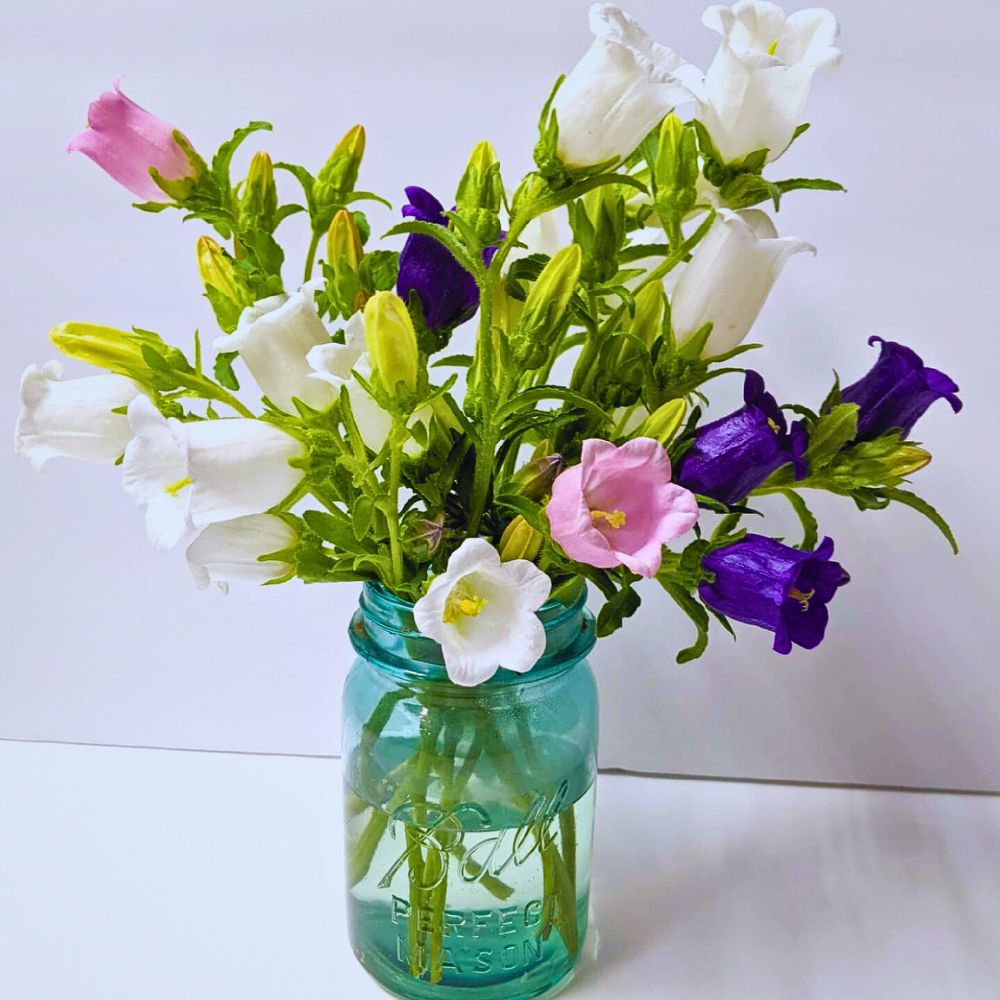
So, now that you know quite a lot about the enchanting Canterbury bells, how about you try it in your garden, or incorporate it as a cut flower in your designs and arrangements, where their enchanting experience is definitely guaranteed.
Feature image by @floral.by.nature. Header image by @cilantrosue.

